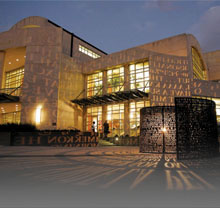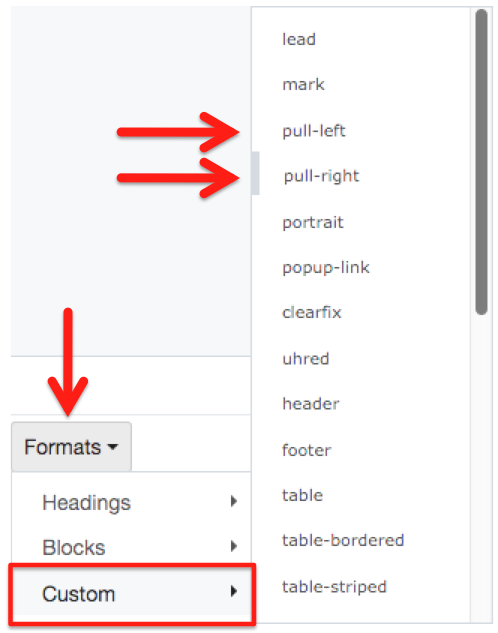Using the Styles Popout - Custom CSS Selector

UH styles for most purposes are already in place behind the scenes, and the typical CMS editor shouldn't have to give them much thought (as long as your Formatting is properly assigned!).
However, if you are comfortable with CSS and your site has some special features you want to include, you can attach a .css stylesheet file (and/or a .js script) of your own by uploading the file into the CMS and linking it to the page under the "Settings" area on the Edit pane. Additionally, the UH CMS leverages Bootstrap, so those elements can be integrated into a WYSIWYG's HTML editor as well.
For other information, see more about UH Web Policies and UH Web Style Guidelines.
The Styles Popout is a feature which allows you to access a set of pre-determined CSS styles which editors may apply in various ways throughout the UH website. These styles can be accessed from the WYSIWYG toolbar's Format[s], and also from Image, Link, and Table editing dialogs.
Applying a Style | Some Commonly Wanted Styles: Lead, Wrap Text, Buttons, Tables
Applying a Style:

Styles can be applied by first selecting text, objects, graphics, etc. from a WYSIWYG window and then opening the Formats: Custom: CSS Styles Popout to select an item from the list. In the example shown here, the "pull-right" style shows a grey bar next to it, indicating that the style had already been applied to whatever material had been selected before the Formats list was opened.
Remember that styles may render differently within the WYSIWYG editor than they do in the Preview/View mode, because the WYSIWYG Edit mode may not be able to "see" the full range of UH styles. This is because many UH styles are called from sources which reside outside of the many and various individual websites which comprise the full UH Website.
Once you save the change by clicking Submit for the page you should then see how the Style is rendered in the context of the full UH styles environment for that page.
The Preview mode is designed to "see" every style a page is heir to, so even if something doesn't look quite right in the Edit mode, if it still looks okay in the Preview mode then you likely have everything assigned okay.
If something looks or works badly in Preview mode, it is likely you still have some work to do!
Styles ("Custom" / CSS) options are also offered from the Image, Link, and Table Insert/Edit dialogs. Just keep in mind that not all styles in the list are appropriate for every purpose. Feel free to experiment. You can always discard your editing session ("Close" without saving) or discard your Draft.
Some commonly wanted styles from the popout:
Select the indicated items to see examples, with additional discussion:
Lead | Text Wrap | Buttons | Tables
Notes about the HTML
Note that choosing a Style here will add a "class" atribute to the HTML tag code for the item to which the style is applied.
(e.g. for text Formatted as a paragraph, with the "pull-left" style applied: <p class="pull-left"> . . . </p>)
Once the class attribute is in place in the code, then other styles chosen for that item can be accumulated within the same statement.
(e.g. <p class="pull-left lead pull-right"> . . . </p>)
To remove any unwanted styles
To remove a style, select the material in question (e.g. image), and reopen the Styles Popout. You should see gray bar indicators telling you which style or styles have already been applied. To remove one: click on the indicated item and that style will be removed.Alternately, you can go into the embedded HTML editor and edit the class statement manually. If removing only selected styles, look between the quote marks. Each separate style will be separated by a space. For this reason the style names themselves cannot contain spaces.
If you wish to manually remove all styles from an item, remove the entire "class" statement (e.g. <p class="pull-left"> . . . </p> would then become simply
<p> . . . </p>).